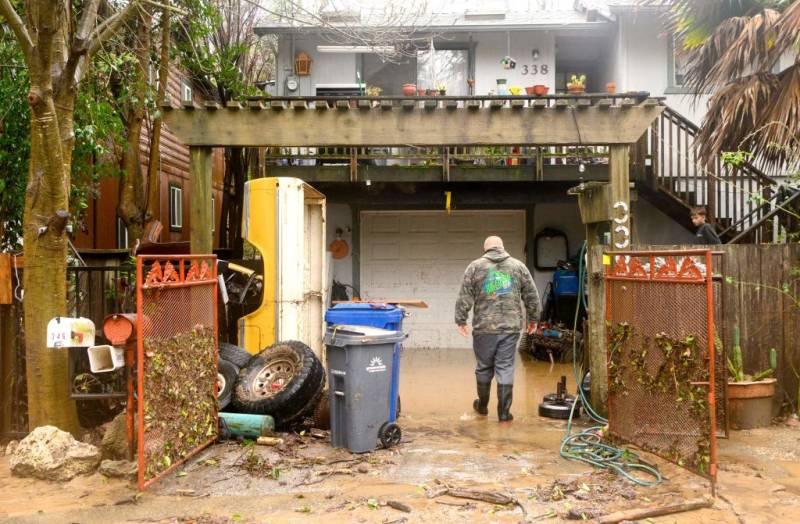Amid a relentless series of powerful and destructive storms that continue to simultaneously drench and wind-blast the Bay Area and much of the rest of California, scores of residents are now beginning the complicated process of filing insurance claims and assessing damage to their property.
While many home insurance plans cover rain and wind damage, damages from floods are not covered under homeowners and renters policies. And unlike areas along coastlines and rivers where flood insurance is a requirement, homeowners who live farther inland where flooding is less common — but who have been hit hard this week — are unlikely to have similar coverage. Only a specific flood insurance policy will cover home flood-related losses.
Most flood insurance is administered through the federal government and policies can be purchased from a private insurer under contract with the Federal Emergency Management Agency. Coverage plans for the structure and content of homes are sold separately with maximum amounts capped at $250,000 (structure) and $100,000 (content).
And remember, flood insurance requires a waiting period of 30 days before a policy takes effect (to prevent people from buying it at the last minute, as the storm clouds are rolling in).
KQED’s Brian Watt on Monday spoke to Janet Ruiz, director of strategic communication for the Insurance Information Institute, an industry group, about how residents can manage risks and get the appropriate type of insurance to best protect their property and recover.
This interview has been edited for brevity and clarity.
Brian Watt: So in a general sense, how do you mitigate risk for storms like the ones we’ve been seeing in the Bay Area and across California?
Janet Ruiz: We really encouraged people to use the sandbags. Take advantage of those. Most cities and counties are offering them. Clear your gutters, do all of the things that you can around your house, like look for things that would blow around and could cause damage to your home or your car. Move things to higher ground.
And for people who are renting homes, what do you advise?
If you’re renting and you have renters insurance or flood-renters insurance, then that would cover your belongings. It’s always important to remember that your landlord is not responsible for your belongings.
If my neighbor’s tree falls on my car or home, how does insurance handle this?
Then the neighbor’s insurance coverage would respond and pay for the damages.
What happens, for example, from an insurance perspective if your car gets flooded?
If your car gets flooded and you have comprehensive coverage on your car insurance, then that will be taken care of by your insurance company as soon as you put a claim in.
Let’s talk about small businesses. They really get hurt by these storms. What can insurance cover?
So small-business owners have a variety of insurance coverages that they can pick and choose from. And we always recommend that they get business-interruption insurance because that can really help them if they have to close down due to any type of catastrophe that’s covered under their policy.
How about the San Franciscans we’ve been hearing about whose sewers are backed up. Who is liable there?
When you have homeowners insurance, you can get extra coverage called backup of sewer and drain. It’s very important coverage to have because it can happen to anybody.
We both live in California. We have earthquakes, fires, flooding, mudslides. We kind of see it all here. Is it worth the risk of living here?
Well, I think those of us who live in California will answer yes. There’s so many wonderful aspects to living in California, and it’s hard to find anywhere in the U.S. where there’s no risk. So the important thing is to manage the risks that you have in your particular area. We have very good building codes in California for floods, earthquakes and wildfires. So we are a good state to live in. We have so much to offer, and it’s a beautiful state.
